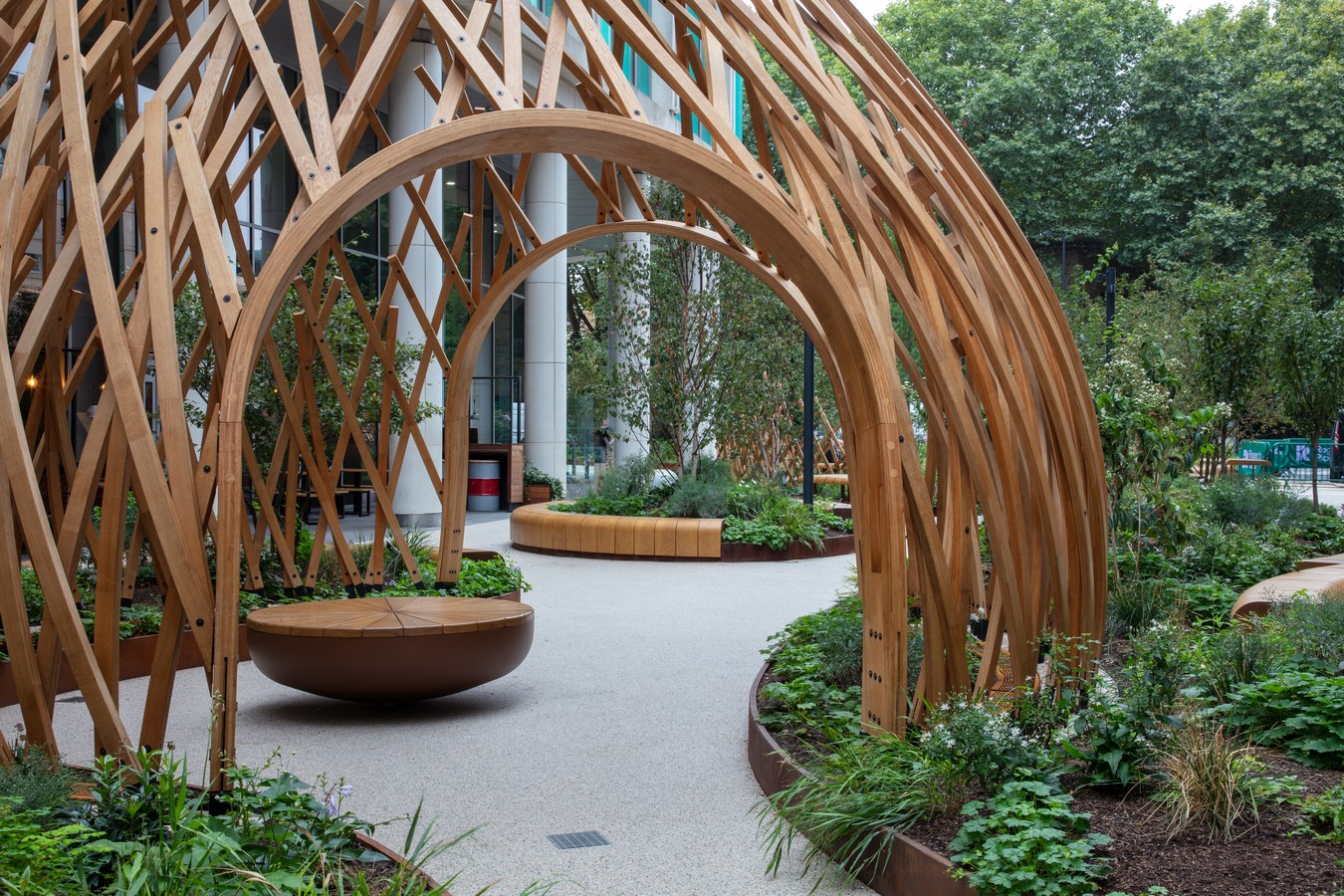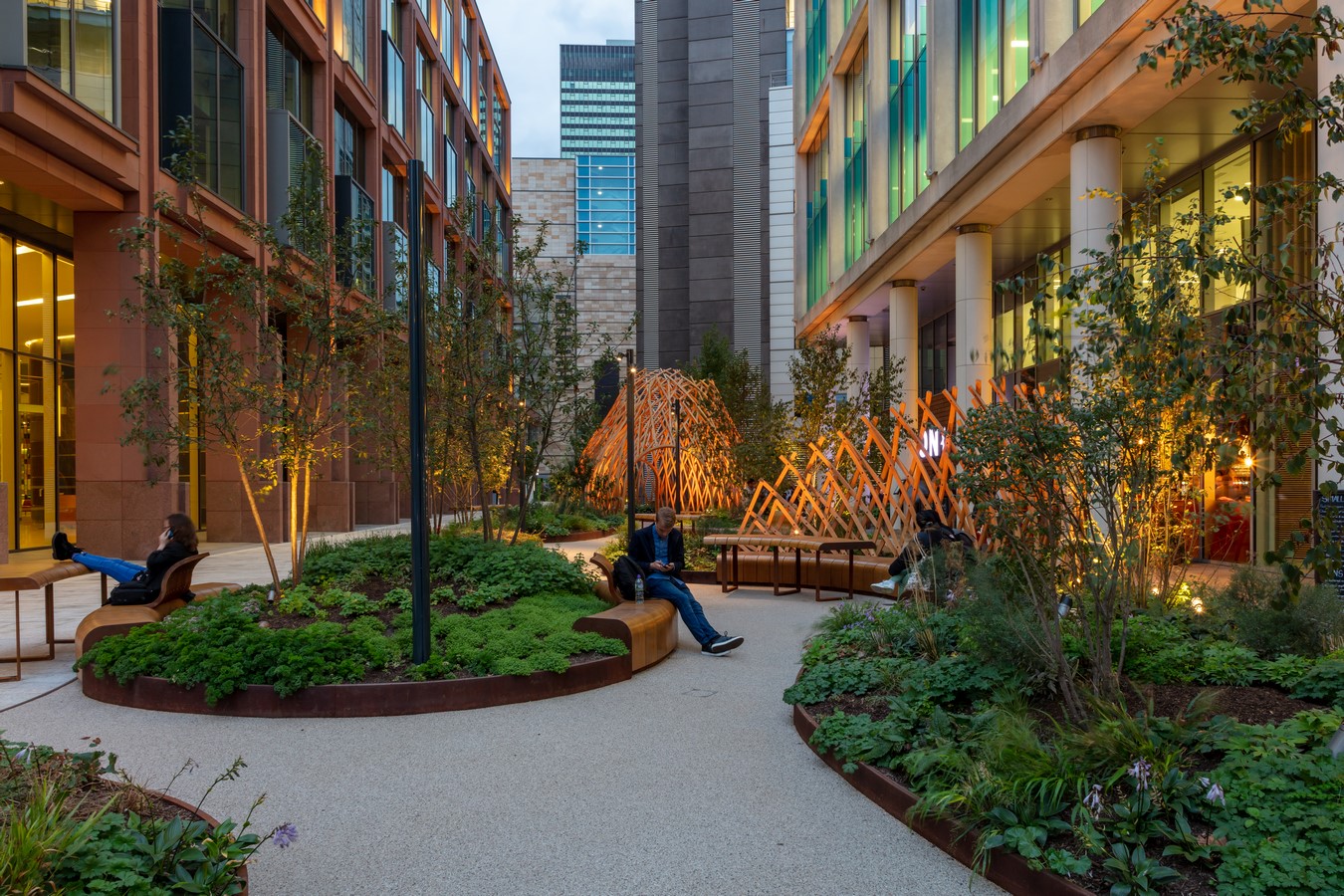Nex- Architecture worked together with Xylotek – who are leaders is advanced timber structures – to both design and build a series of innovative laminated oak pavilions. These structures form a hard landscape that enhances the public spaces of London’s Regent’s Place. Located east of Regent’s Park and west of Euston station, Regent’s Place is a mixed-use commercial and residential area conceived by UK’s highly regarded developers, British Land, during the mid-1990s.
Project Name: New landscape in Central London
Studio Name: Nex Architecture with Xylotek

Nex- and Xylotek have used natural materials and generous planting to create the pavilions as a response to British Land’s brief for revitalising the shared spaces and pedestrian routes in and around Regent’s Place. The three new pavilions are semi-sheltered spaces with urban furniture integrated into their design, intended for people to sit inside and relax, to read the paper or meet with friend over lunch. The pavilions are also suited for outdoor theatre and music performances.
Recently, the Regent’s Place “campus” has seen a shift in attracting high numbers of younger tenants from corporate blue-chips to media, technology and life science companies. In turn, there has been an aspiration to create a more lively public space. The pandemic further reinforced British Land’s ambition to focus on a sense of natural wellbeing throughout Regent’s Place.

Design Approach
Inspired by nature and especially woodlands, the design of the three Regent’s Place pavilions gathers thin strips of oak in delicate lattices. These framed structures enclose visitors while also revealing lush planting.
Moving from west to east, the pavilions become larger in size. The first welcomes people to congregate in conversation. The second encourages a playful gathering enjoying a large circular spinning seat positioned in the centre of the path. The last of the three pavilions has a new tiered performance space for the local theatre group, and is an ideal facility to be used in the evenings and weekends.

The completed pavilions extend the transformation of the public realm at Regent’s Place and importantly introduce biodiversity with the rich planting as conceived by Townsends.



















